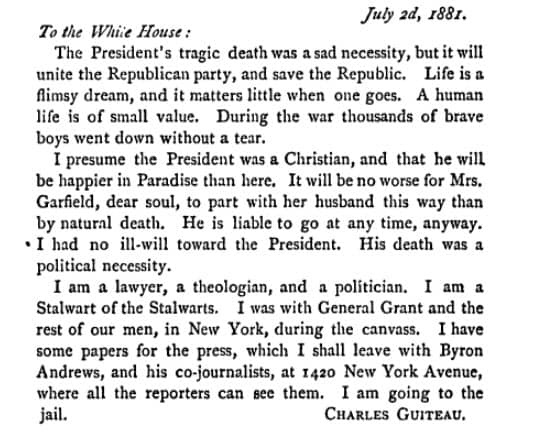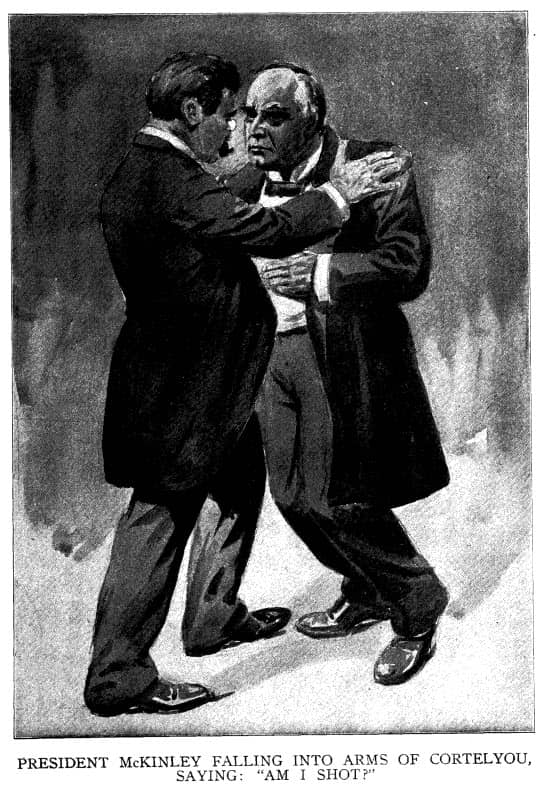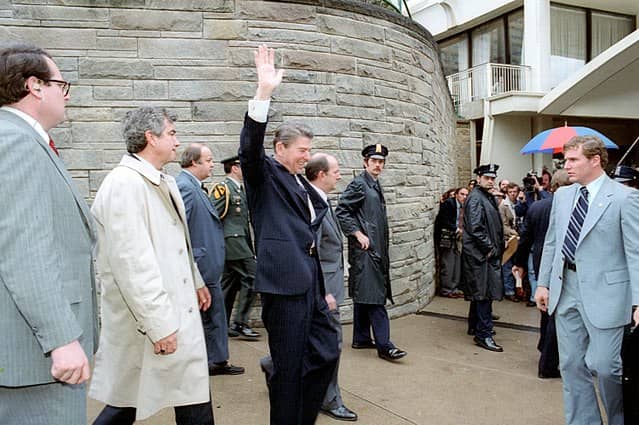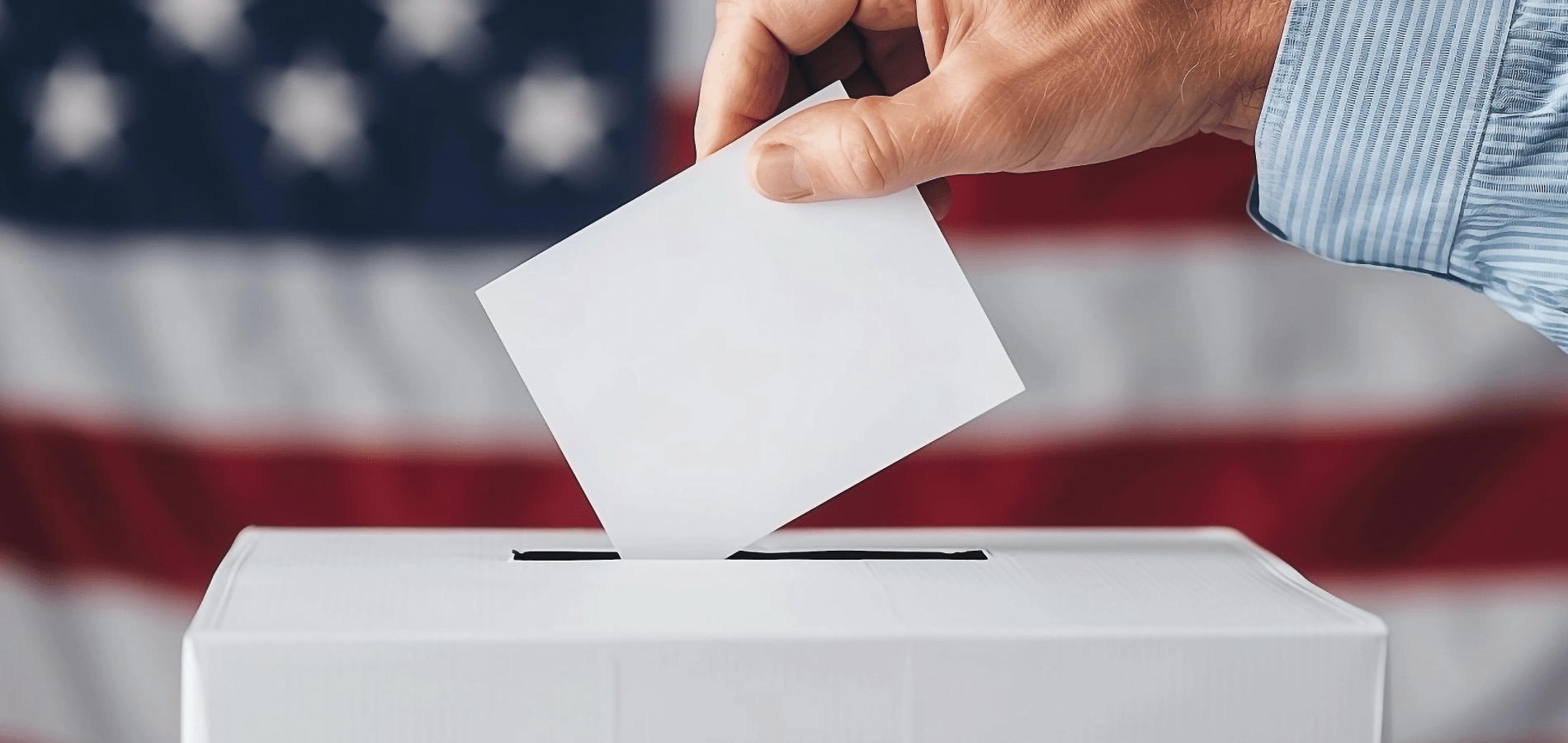Last month, former President Donald Trump was shot by a gunman during a campaign rally in Butler, Pennsylvania. The striking image of Trump with blood on his face, his fist raised defiantly, surrounded by Secret Service agents with an American flag waving behind him, is bound to become an iconic moment in history. Although presidential assassination attempts are not unprecedented, it has been over four decades since a current or former president was attacked and harmed. In this blog, we will take a brief look back at 7 presidential assassination attempts in history.
1. Abraham Lincoln
When: April 14, 1865 (During his presidency term)
Who: John Wilkes Booth
Where: Ford’s Theatre in Washington D.C.
How: .44-caliber Derringer pistol
On Good Friday in 1865, the infamous actor John Wilkes Booth executed a shocking plan to assassinate President Abraham Lincoln.[1]Joseph A.; Makowicki Beard, Shane D. Lincoln Assassination: Staff Ride Guide (2020). This document can be found in HeinOnline’s Military and Government database. Originally, Booth intended to kidnap Lincoln to trade for the release of numerous Confederate prisoners of war, as the Union had recently halted POW exchanges, creating dire shortages for the Confederate military. Booth, along with his co-conspirators, George Atzerdoft and Lewis Powell, also targeted Vice President Andrew Johnson and Secretary of State William H. Seward for assassination.
On April 14th, while Lincoln was enjoying the play Our American Cousin from a balcony seat, Booth slipped into the theater and shot the president from behind. Lincoln succumbed to his injuries later at the Petersen House, a boarding house across the street from Ford’s Theater. Despite Booth’s elaborate plan, the attacks on Johnson and Seward failed, leaving both men alive. Atzerodt lost his nerve and never went through with the attack on the Vice President. Powell, however, severely injured Secretary Seward, leaving him permanently maimed, but Seward ultimately survived the assault.
Booth’s escape was short-lived; he was tracked down and killed 12 days later. The remaining conspirators faced justice and were hanged for their involvement in the plot.[2]T.M. Harris. Assassination of Lincoln: A History of the Great Conspiracy, Trial of the Conspirators by a Military Commission, and a Review of the Trial of John H. Surratt (1892). This document can be found in HeinOnline’s U.S. … Continue reading

2. James A. Garfield
When: July 2, 1881 (During his presidency term)
Who: Charles Guiteau
Where: Train station in Washington, D.C.
How: .442 Webley British Bull Dog revolver
Writer and lawyer Charles J. Guiteau harbored grandiose delusions about his role in President James A. Garfield’s election victory, believing his speech in support of Garfield[3]Hayes, Henry Gillespie. A Complete History of the Life and Trial of Charles Julius Guiteau, Assassin of President Garfield (1882). This document can be found in HeinOnline’s World Trials Library. had clinched the win. When he was passed over for the ambassadorships to Vienna or Paris, his disillusionment turned deadly. Guiteau stalked Garfield at least four times before making his move on July 2, 1881, shooting the president twice—one bullet grazing Garfield’s shoulder, the other piercing his back. He claimed the assassination was meant to unite the Republican Party. Garfield clung to life for 11 agonizing weeks before succumbing to infection from his wounds. Some people blame the doctors for medical malpractice.[4]James A. Young, The President, His Assassin, and the Court-Martial of Sergeant John A. Mason, 77 A.F. L. REV. 1 (2017). This document can be found in HeinOnline’s Military and Government database. Guiteau was swiftly arrested, tried, and sentenced to hang for his crime.
Fun Fact: Did you know Charles Guiteau was a member of the Oneida Community, the religious sect that preached communal property, group marriage, and yes, eventually turned into the popular silverware company?

3. William McKinley
When: September 6, 1901 (During his presidency term)
Who: Leon Czolgosz
Where: Temple of Music in Buffalo, New York
How: 32-caliber Iver Johnson “Safety Automatic” revolver
On Friday, September 6, 1901, President William McKinley was attending the Pan-American Exposition in Buffalo when he was shot twice by Leon Czolgosz, an anarchist operating under the alias Fred C. Nieman. Czolgosz was a member of a radical anarchist society[5]John Coulter. Our Martyr Presidents: Lincoln, Garfield, McKinley, Their Illustrious Lives, Public and Private, and Their Glorious Deeds (1901). This document can be found in HeinOnline’s U.S. Presidential Library. formed by Russian refugees, and his actions were politically motivated, though his exact intentions remain unclear.
Disguising a .32 caliber revolver beneath a handkerchief, Czolgosz approached McKinley and fired two shots into the president’s stomach. As a Secret Service detective caught the wounded president, McKinley calmly asked, “Am I shot?” The nation remained hopeful for his recovery, but he succumbed to his injuries eight days later.
Czolgosz was swiftly brought to trial, found guilty, and sentenced to death by electrocution[6]Marshall Everett. Complete Life of William McKinley and Story of His Assassination (1901). This document can be found in HeinOnline’s U.S. Presidential Library. for his deadly act of political violence.
(Psst, we wrote an extended version of this historic event in the HeinOnline Blog.)

4. Theodore Roosevelt
When: October 14, 1912 (After his presidency term)
Who: John Schrank
Where: Campaigning in Milwaukee, Wisconsin
How: .38-caliber Colt Police Positive Special
As former president Theodore Roosevelt exited his hotel to address a campaign rally, a shot rang out. Bowing to the crowd from his car, Roosevelt was struck by a bullet fired by John Schrank,[7]Joseph Bucklin Bishop. Theodore Roosevelt and His Time Shown in His Own Letters (1920). This document can be found in HeinOnline’s U.S. Presidential Library. a tavern owner. The crowd erupted, calling for Schrank to be lynched, but Roosevelt, ever the statesman, ordered that the man remain unharmed.
Defying medical advice, Roosevelt refused to go to the hospital, determined to deliver his speech. With a bullet hole visible in his coat, he brushed off concerns, insisting it was nothing serious. He then proceeded to deliver an impassioned speech, holding the audience captive for 90 minutes. Only afterward did he go to the hospital, where doctors found a bullet lodged in his chest, miraculously missing vital organs. The bullet would remain there for the rest of his life.
Despite his remarkable resilience, Roosevelt lost the reelection bid. Schrank was arrested and declared legally insane. He insisted he saw William McKinley’s ghost in a dream[8]To Establish Justice, to Insure Domestic Tranquility: Final Report of the National Commission on the Causes and Prevention of Violence (1969). This document can be found in HeinOnline’s Civil Rights and Social Justice database. accusing Roosevelt of McKinley’s assassination. Roosevelt once served as McKinley’s Vice President, which adds an extra layer of eeriness to this claim. Schrank was eventually institutionalized until he died in 1943.
Ladies and gentleman, I don’t know whether you fully understand that I have just been shot; but it takes more than that to kill a Bull Moose.”
5. John F. Kennedy
When: November 22, 1963 (During his presidency term)
Who: Lee Harvey Oswald
Where: Motorcade in Dallas, Texas
How: 6.5×52mm Carcano Model 38 rifle
During a presidential motorcade in Dallas, former U.S. Marine Lee Harvey Oswald fired from a sixth-floor window of the Texas School Book Depository, striking President John F. Kennedy.[9]Report of the President’s Commission on the Assassination of President John F. Kennedy (1964). This document can be found in HeinOnline’s John F. Kennedy Assassination Collection. The first bullet hit Kennedy in the back and exited through his throat; a second bullet fatally struck his head. Kennedy was pronounced dead at the hospital.
Hours later, Dallas policeman J.D. Tippit was also shot dead in a nearby neighborhood.[10]14130 11 (1994)
Assassination Materials Disclosure Act of 1992, part 2. This document can be found in HeinOnline’s U.S. Congressional Serial Set Oswald was quickly arrested and charged with both murders. Known for being emotionally disturbed from a young age, Oswald’s troubled past[11]Marc Bookman, The Sentencing of Lee Harvey Oswald, 68 Prac. Law. 49 (2022). This document can be found in HeinOnlne’s American Law Institute Library came into sharp focus.
Two days after his arrest, while being transferred from the city jail to the county jail, Oswald was shot and killed by Jack Ruby, a nightclub owner. In September 1964, the Warren Commission concluded that Oswald had acted alone in the assassinations of both Kennedy and Tippit and that Ruby had acted alone in killing Oswald.
With conspiracy theories still swirling about a potential plot or cover-up in President Kennedy’s assassination, why not explore the evidence for yourself? Dive into our dedicated database and uncover the details.
6. Ronald Reagan
When: March 30, 1981 (During his presidency term)
Who: John Hinckley Jr.
Where: Washington Hilton Hotel in Washington, D.C.
How: .22 caliber Röhm RG-14 revolver
In 1981, President Ronald Reagan was heading back to his limousine after a speech when John Hinckley Jr. fired six shots at him. Hinckley was swiftly detained, but not before a bullet ricocheted off the limo,[12]JFK Assassination Records Archives 1 (1963). This document can be found in HeinOnline’s John F. Kennedy Assassination Collection. puncturing Reagan’s lung and causing serious internal bleeding. Despite the severity of his injuries, Reagan was stabilized and eventually recovered. However, three others were injured, including press secretary James Brady, who suffered brain damage.
Hinckley, a singer-songwriter, had become obsessed with actress Jodie Foster, bombarding her with love letters, poems, and phone messages. Driven by a twisted desire to impress Foster,[13]Gary M. Lavergne, Murder and Mayhem on the Texas Supreme Court: The Shocking Death of Justice William Pierson and the Evolution of the Insanity Defense in Texas, 4 TSCHS J. 20 (2014). This article can be found in HeinOnline’s … Continue reading he attempted to assassinate Reagan. Hinckley was later deemed mentally ill and confined to an institution. The public outcry that justice was not served prompted the Insanity Defense Reform of 1984.[14]1982 Edition. Supplement 3, Vol. 2 97 (1983-1986). Sections 4241 – 4243. This document can be found in HeinOnline’s U.S. Code database. In 2016, Hinckley was ultimately released after being considered no longer a threat to himself or others.

7. Donald J. Trump
When: July 13, 2024 (After his presidency term)
Who: Thomas Matthew Crooks
Where: Rally in Butler, Pennsylvania
How: AR-15–style rifle
During a campaign rally in Butler, Pennsylvania, a tip came in about a person acting suspiciously. Before officers could locate him, 20-year-old Thomas Matthew Crooks had climbed onto a rooftop and fired eight rounds from an AR-15-style rifle, 400 feet away from former President Donald Trump. The U.S. Secret Service sniper team quickly shot and killed Crooks, but not before one of his bullets grazed Trump’s ear. The attack also claimed the life of an audience member and critically injured two others.
In the chaotic moments following the shooting, Trump clutched his ear before taking cover on the ground. Moments later, he stood up, defiantly shouting “fight” and pumping his fist in the air. The FBI later discovered bomb-making materials in Crooks’ car and confirmed he acted alone. Records indicated that Crooks was a registered Republican voter in Pennsylvania, yet federal campaign finance reports revealed he had donated $15 to a Democratic progressive political action committee in 2021. While his exact motive remains unclear, the incident underscored the volatile political climate and the ever-present need for security measures.
The More You Know
Presidential assassinations have left a profound impact on history, shaping the course of nations. If you’re eager to explore more about these pivotal events and stay informed about current events, subscribe to the HeinOnline Blog, where we cover subjects such as political science, law, criminal justice, history, and more!
HeinOnline Sources[+]
| ↑1 | Joseph A.; Makowicki Beard, Shane D. Lincoln Assassination: Staff Ride Guide (2020). This document can be found in HeinOnline’s Military and Government database. |
|---|---|
| ↑2 | T.M. Harris. Assassination of Lincoln: A History of the Great Conspiracy, Trial of the Conspirators by a Military Commission, and a Review of the Trial of John H. Surratt (1892). This document can be found in HeinOnline’s U.S. Presidential Library. |
| ↑3 | Hayes, Henry Gillespie. A Complete History of the Life and Trial of Charles Julius Guiteau, Assassin of President Garfield (1882). This document can be found in HeinOnline’s World Trials Library. |
| ↑4 | James A. Young, The President, His Assassin, and the Court-Martial of Sergeant John A. Mason, 77 A.F. L. REV. 1 (2017). This document can be found in HeinOnline’s Military and Government database. |
| ↑5 | John Coulter. Our Martyr Presidents: Lincoln, Garfield, McKinley, Their Illustrious Lives, Public and Private, and Their Glorious Deeds (1901). This document can be found in HeinOnline’s U.S. Presidential Library. |
| ↑6 | Marshall Everett. Complete Life of William McKinley and Story of His Assassination (1901). This document can be found in HeinOnline’s U.S. Presidential Library. |
| ↑7 | Joseph Bucklin Bishop. Theodore Roosevelt and His Time Shown in His Own Letters (1920). This document can be found in HeinOnline’s U.S. Presidential Library. |
| ↑8 | To Establish Justice, to Insure Domestic Tranquility: Final Report of the National Commission on the Causes and Prevention of Violence (1969). This document can be found in HeinOnline’s Civil Rights and Social Justice database. |
| ↑9 | Report of the President’s Commission on the Assassination of President John F. Kennedy (1964). This document can be found in HeinOnline’s John F. Kennedy Assassination Collection. |
| ↑10 | 14130 11 (1994) Assassination Materials Disclosure Act of 1992, part 2. This document can be found in HeinOnline’s U.S. Congressional Serial Set |
| ↑11 | Marc Bookman, The Sentencing of Lee Harvey Oswald, 68 Prac. Law. 49 (2022). This document can be found in HeinOnlne’s American Law Institute Library |
| ↑12 | JFK Assassination Records Archives 1 (1963). This document can be found in HeinOnline’s John F. Kennedy Assassination Collection. |
| ↑13 | Gary M. Lavergne, Murder and Mayhem on the Texas Supreme Court: The Shocking Death of Justice William Pierson and the Evolution of the Insanity Defense in Texas, 4 TSCHS J. 20 (2014). This article can be found in HeinOnline’s Law Journal Library |
| ↑14 | 1982 Edition. Supplement 3, Vol. 2 97 (1983-1986). Sections 4241 – 4243. This document can be found in HeinOnline’s U.S. Code database. |



